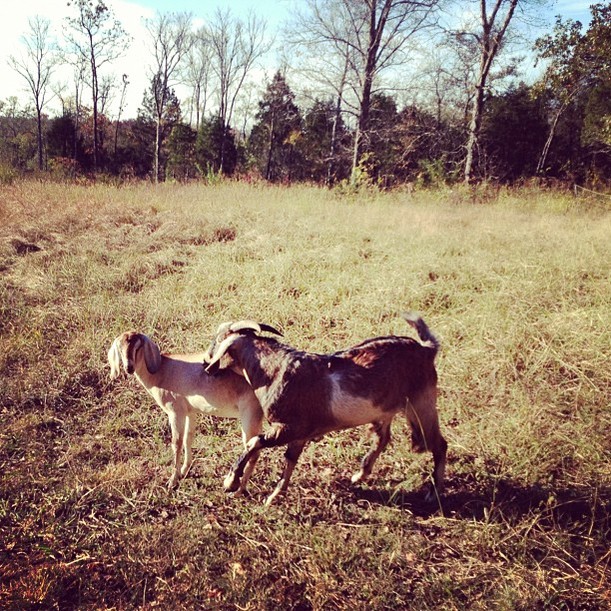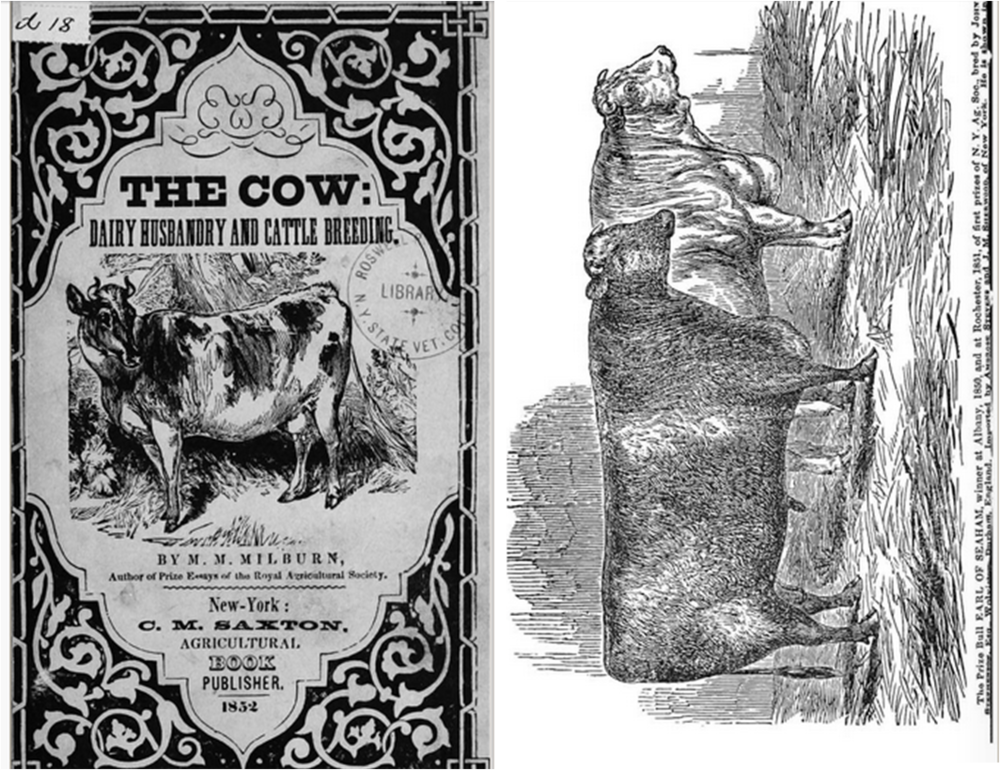 Gozer, putting the moves on TijerasA few months ago, Scrapple and I had a little kitchen table meeting to strategize our first breeding season. We decided that we would aim to kid at the beginning of April. By that time the grass is growing and the sun is warm but the insects aren't yet out in full force. Goats have a 5 month gestation period so this meant we would breed at the end of October/beginning of November.
Gozer, putting the moves on TijerasA few months ago, Scrapple and I had a little kitchen table meeting to strategize our first breeding season. We decided that we would aim to kid at the beginning of April. By that time the grass is growing and the sun is warm but the insects aren't yet out in full force. Goats have a 5 month gestation period so this meant we would breed at the end of October/beginning of November.
While it was pretty easy to write "Breed Goats" into a calendar reminder, it didn't take long for the reality of how clueless we were about the actual logistics to set in.
We knew that we wanted to choose who bred with who, and who was not going to be bred (Willow) so this ruled out just "running" the bucks with the does for a month (which is a great way to do things if your herd is set up for it). We would need to wait for the signs of heat or estrus in the doe. Then we would need to put the doe with one of the bucks in an area away from the herd. We would need to make sure that he actually did the deed, several times, and then wait to see if the doe came into heat again later in the season. If not, the breeding will have been successful.
With no experience breeding any animals (not even pet hamsters!) we were a little boggled. We hit the books, expecting some clarity only to emerge thoroughly perplexed. Experienced goat owners talk of identifying a goat in heat by her waving tail and "winking" vagina. What!?!

